Whether you’re a born-and-bred Cockney local or an international visitor, London will astound you with its unique sights and amazing experiences. To narrow down the choice a bit, our intrepid bloggers are featuring their own favourite attractions and experiences within strolling distance of the District Line on London’s Tube.
Of course, a few history lessons are inevitable as we explore this 2000-year-old city, but the diversity means it’s never ever boring, we promise. Take this vicarious tour of the sprawling UK capital and you’ll find yourself climbing steps (lots and lots of them!), exploring underground dungeons and War Rooms, and we should also “Kew” a mention for exploring some expansive royal gardens! For stunning views of the London skyline read about a little-known viewing platform at The Monument, which incidentally gave the District Line station its rather odd name.
The River Thames is the lifeblood of the city and was the reason why the Romans chose to settle in Londinium. We include a visit (inside and out!) to one of London’s most famous bridges before stepping aboard a decommissioned naval warship for a fascinating tour.
Of course, we have a butchers* inside Westminster Abbey, the Royal Albert Hall, and the Tower of London with its rather tasty Crown Jewels before popping into one of the city’s free museums. Finally, we head to Brick Lane where street art graffiti brightens an otherwise dull and gritty area and brings out the art critic in us all!
* In Cockney rhyming slang, the word “butchers” (hook) means “look”
- Look down from Tower Bridge’s high-level glass floors
- Admire the 360 views from Monument to the Great Fire of London!
- London’s dark history at The London Dungeon
- Set sail on the high seas on HMS Belfast
- Pay tribute to those who shaped British history at Westminster Abbey
- Victorian vibes at the Royal Albert Hall
- See the Crown Jewels & famous Ravens at the Tower of London
- Relive the time to dare at the Churchill War Rooms
- Delve deep into the past at the Natural History Museum
- The Royal Botanic Gardens at Kew, 300 acres of stunning parkland
- Appreciate Brick Lane’s street art & gritty history
Look down from Tower Bridge’s high-level glass floors
Commonly confused by foreigners as London Bridge, Tower Bridge is one of the most iconic landmarks in London. Construction on the bascule and suspension bridge started in 1886 and was completed in 1894. The project took 432 workers, 70,000 tons of concrete, 11,000 tons of steel, and cost £1,184,000 ($1,640,952.96), which equals roughly £124 million ($171,856,560) now.
Originally designed as a pedestrian thoroughfare to ease traffic on the bridge, the towers soon gained a reputation for locations of prostitution and thievery. Most pedestrians avoided using the raised walkways and the towers were closed in 1910.|When the towers opened again in 1982, they were marketed as a tourist attraction. Today, over 500,000 visitors visit Tower Bridge to get a lovely view of the river and parts of London while learning about the history of the bridge.
When visiting Tower Bridge, use the Tower Hill underground stop. This will prevent you being trapped on one side of the bridge if a ship needs to go by. This happened to me and I almost wasn’t allowed to go inside as they were locking the doors just as I ran up. Thankfully, the rest of my group was able to persuade them to let me in.
To get to the walkways, we didn’t have to climb the 206 steps to the top. My mom has trouble with stairs, so we took the elevator. Each bridge has glass walls and sections of glass floor. On the edges of the walkway, there are informational exhibits. Most people ignored those and took pictures of themselves laying on the glass floor with the road below them. It’s definitely trippy to see your feet on glass 143ft above the ground!
If you don’t want to look down at the ground, look out. The views from the walkway are just breath-taking! We were able to see the sunset from the bridge, which was just lovely. After you explore the tower walkways, head across the south side of the bridge to the Victorian Engine Rooms. There you’ll find interactive displays and the original steam engines from the 1886 bridge.
Address: Tower Bridge – Tower Bridge Road, London SE1 2UP
Nearest Underground station: Tower Hill
Recommended by Erin Tracy from Traveling Thru History

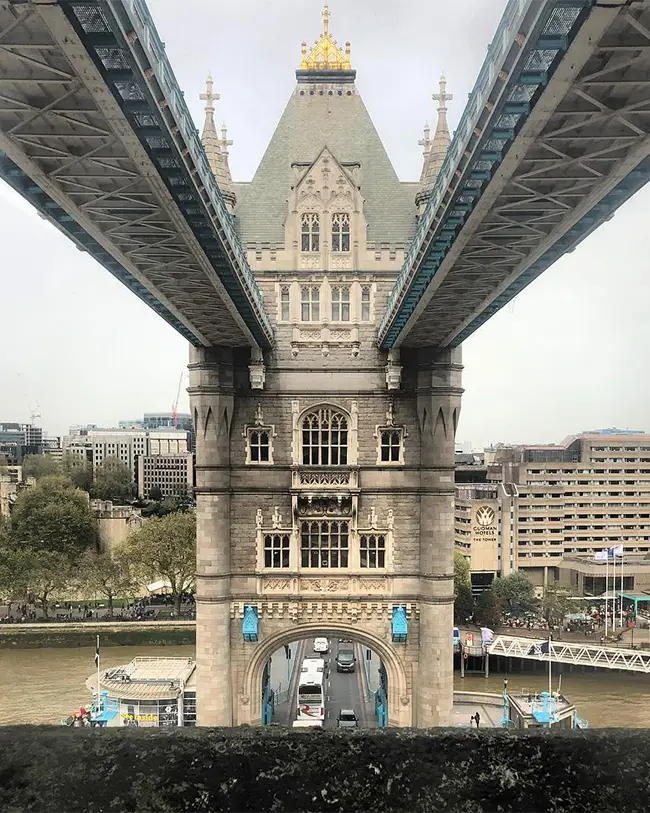
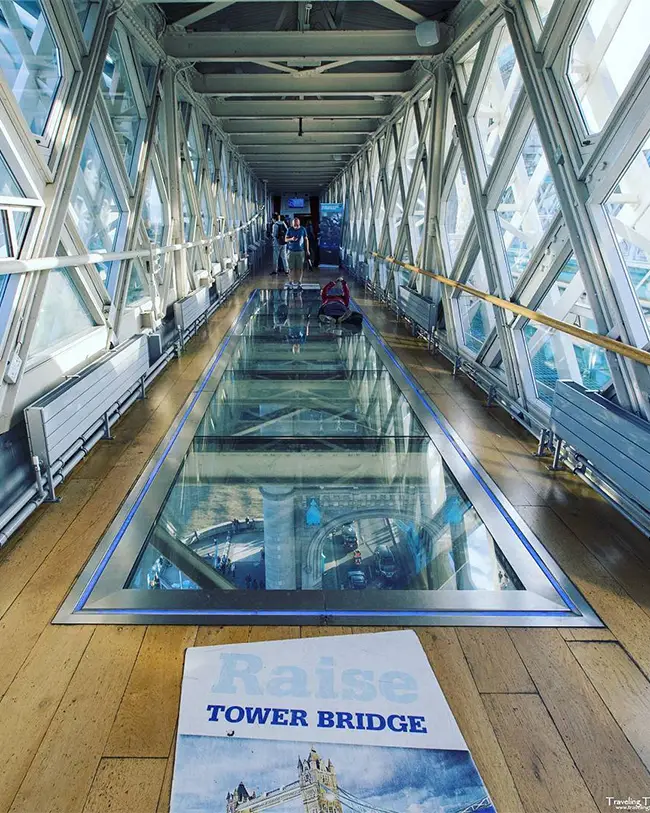
Admire the 360 views from Monument to the Great Fire of London!
If you’re looking for one of the best things to do in London, then you have to add a visit to the Monument to the Great Fire of London to your bucket list. Located a short 2-minute walk away from the District Line station of Monument, this attraction is a must see on any London itinerary.
Built between 1671 and 1677, Monument commemorates the Great Fire of London in 1666. It’s built on the spot where St Margaret Church used to stand, the first church to be destroyed by the fire. Sir Christopher Wren designed it to be the exact same height as the distance between the site where the fire started in Pudding Lane and where the monument stands today.
It’s a 62-metre tall Doric column, with a viewing platform at the top. Inside the column you will find a 311-step spiral staircase that leads to the viewing platform. I visited Monument with a friend and we were out of breath by the time we reached the top, but the climb is well worth the incredible 360° view over London.
From the viewing platform of Monument you can see St Paul’s Cathedral, the Shard, Tower Bridge, the City and even Canary Wharf in the distance. Personally, I love it because it’s high enough to see above the rooftops of the surrounding buildings, but not so high that you lose the details.
I recommend going during the week and avoiding busy times like weekends if you can, since the staircase is quite narrow, and the platform is fairly small. You would end up having to queue or shuffle around other people at the platform.
Address: Monument to the Great Fire of London – Fish St Hill, Bridge, London EC3R 8AH
Nearest Underground station: Monument
Recommended by Greta Omoboni from London Dreaming
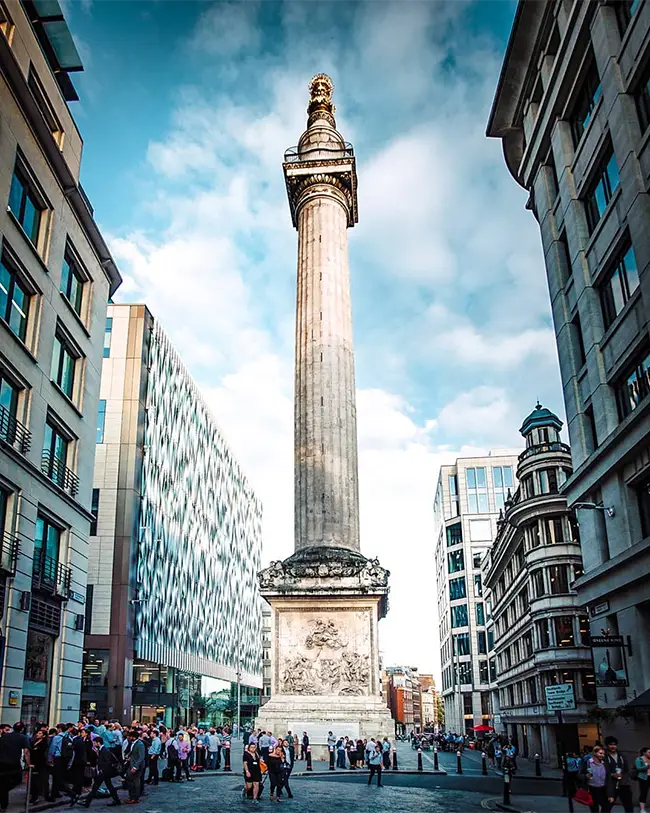
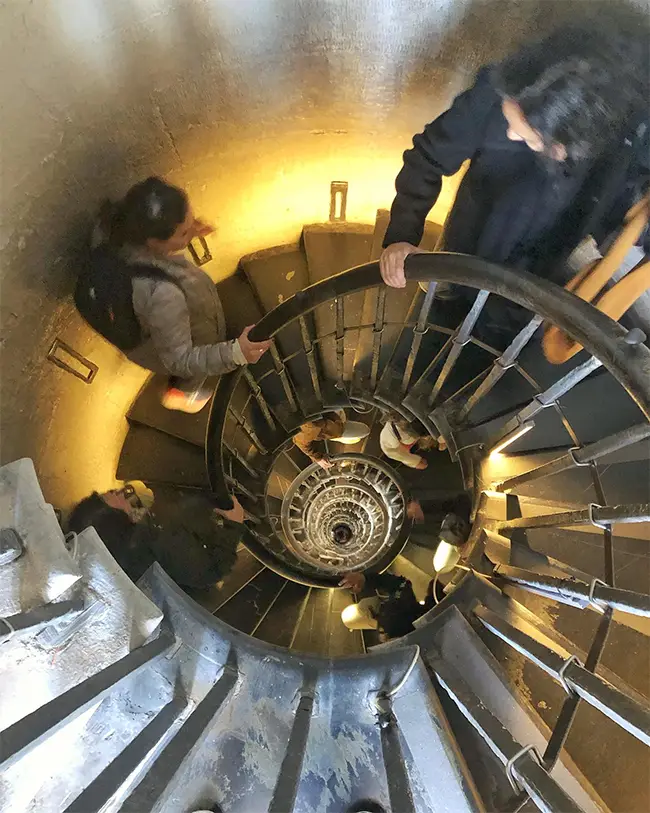
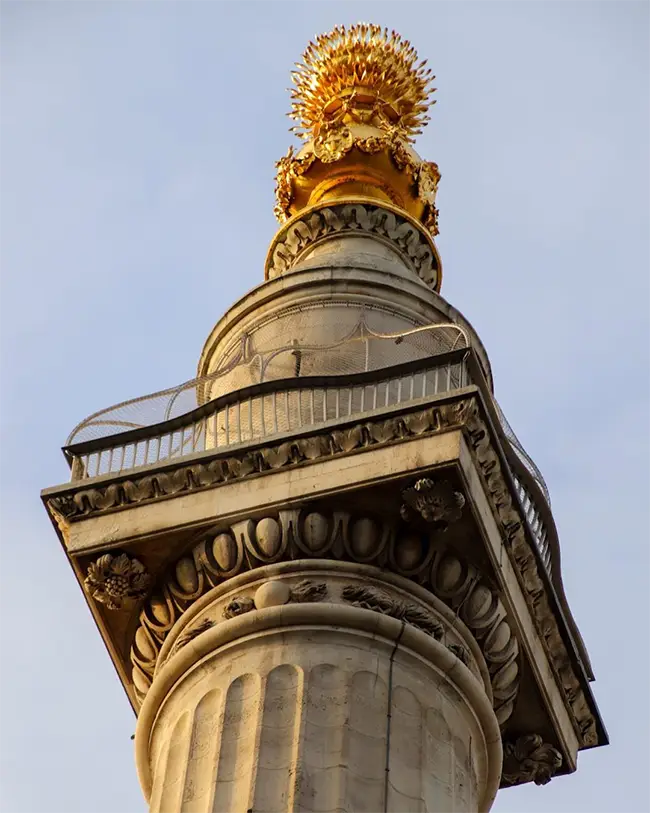
London’s dark history at The London Dungeon
London is full of history, the good, the bad and the ugly! For most, a visit to Kensington Palace or an afternoon wandering The National History Museum will tick the box for history buffs. For me, well, the quirky places full of history and mystery are what I am seeking when I travel.
I have visited London almost every year for the past ten years; sometimes with the family and other times with friends. However, The London Dungeons is a place I have visited a few times, with all of the above mentioned (friends, family and with my partner).
On every occasion, we have opted for the deluxe package, and we have always enjoyed it (you can never have enough London Dungeon photo experiences). The London Dungeon has been entertaining locals and tourists since it first opened its doors in 1974, and it is still as fun as ever.
The torture chambers to the drop-dead ride are all designed to tell London’s dark history through storytelling. We have all heard of Jack the Ripper, but how much do you know about others, such as Guy Fawkes or Sweeney Todd?
Address: The London Dungeon, The Queen’s Walk, South Bank, London SE1 7PB
Nearest Underground station: Westminster
Recommended by Paula Barreca Barnes from Truly Expat Travel

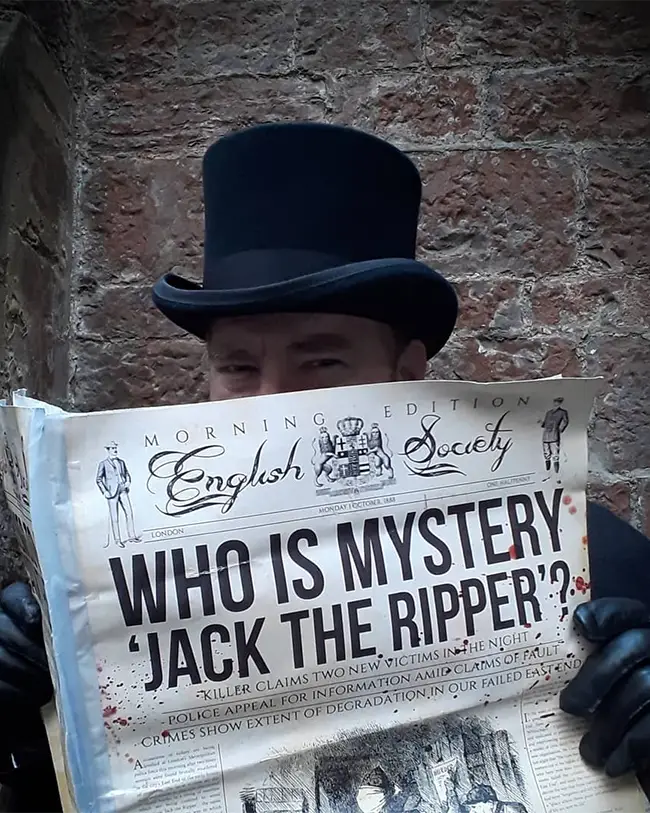
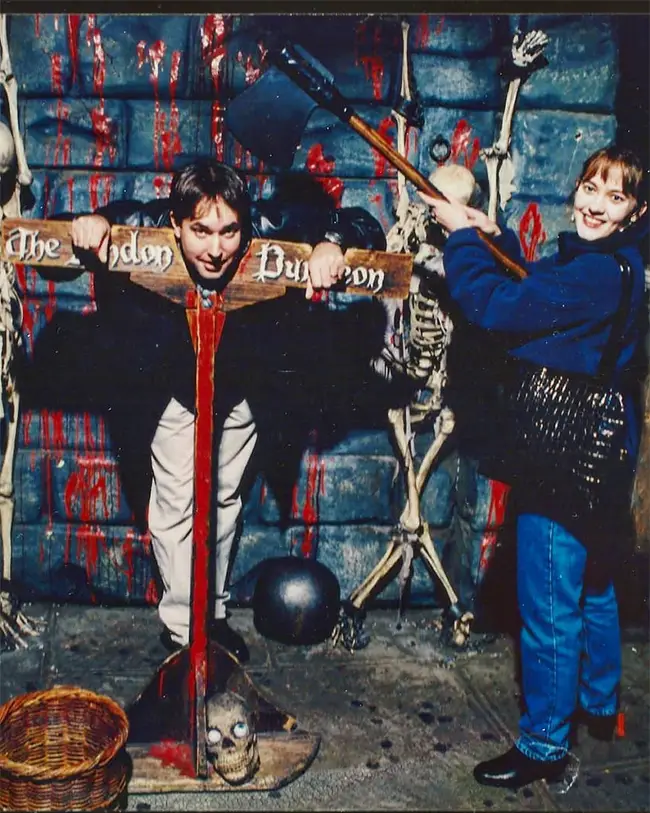
Set sail on the high seas on HMS Belfast
One of the best places to visit off the District Line in London is HMS Belfast. While it is not located directly beside a District Line station, one of the nearest stations to HMS Belfast is Tower Hill. HMS Belfast is just a short 17-minute walk from Tower Hill station, less than a mile, and a walk that will take you across the famous Tower Bridge.
Docked on Queen’s Walk on the south banks of the River Thames, HMS Belfast is a place that should be on your kids’ London bucket list. This former warship is now a floating museum administered by the Imperial War Museum group, which I’ve visited both with and without my son. It was commissioned in the 1930s and saw action in World War II as well as the Korean War. She was decommissioned in the 1960s before becoming a museum.
HMS Belfast is a must-visit in London. I first took my son to visit HMS Belfast in August 2019 and he loved it. There are many decks to explore, rooms to peer into and you can even try your hand at a rescue mission on the interactive mission display in the operation’s room. I had to tear my son away from this room. Kids can also sit in the chairs in the Compass Room and pretend they are the navigating officer, my son certainly did!
Among the places to visit on HMS Belfast with kids not already mentioned is the top deck where you can see the huge gun turrets and the Admiral’s Bridge. Below decks, you can imagine what life must have been like for the crew with visits to the sickbay, NAAFI room, the ship’s galley where meals were prepared and the crew’s mess decks and sleeping quarters. One of my personal favourite places to visit on MS Belfast is the Shell Room where the shells were loaded for the guns.
Whether you or your kids are interested in old warships, HMS Belfast is a fascinating place in London to visit and is close enough to the District Line. You could also combine a visit here with one to the Tower of London!
Address: HMS Belfast – The Queen’s Walk, London SE1 2JH
Nearest Underground station: Tower Hill
Recommended by Catherine Jordan from Passports and Adventures
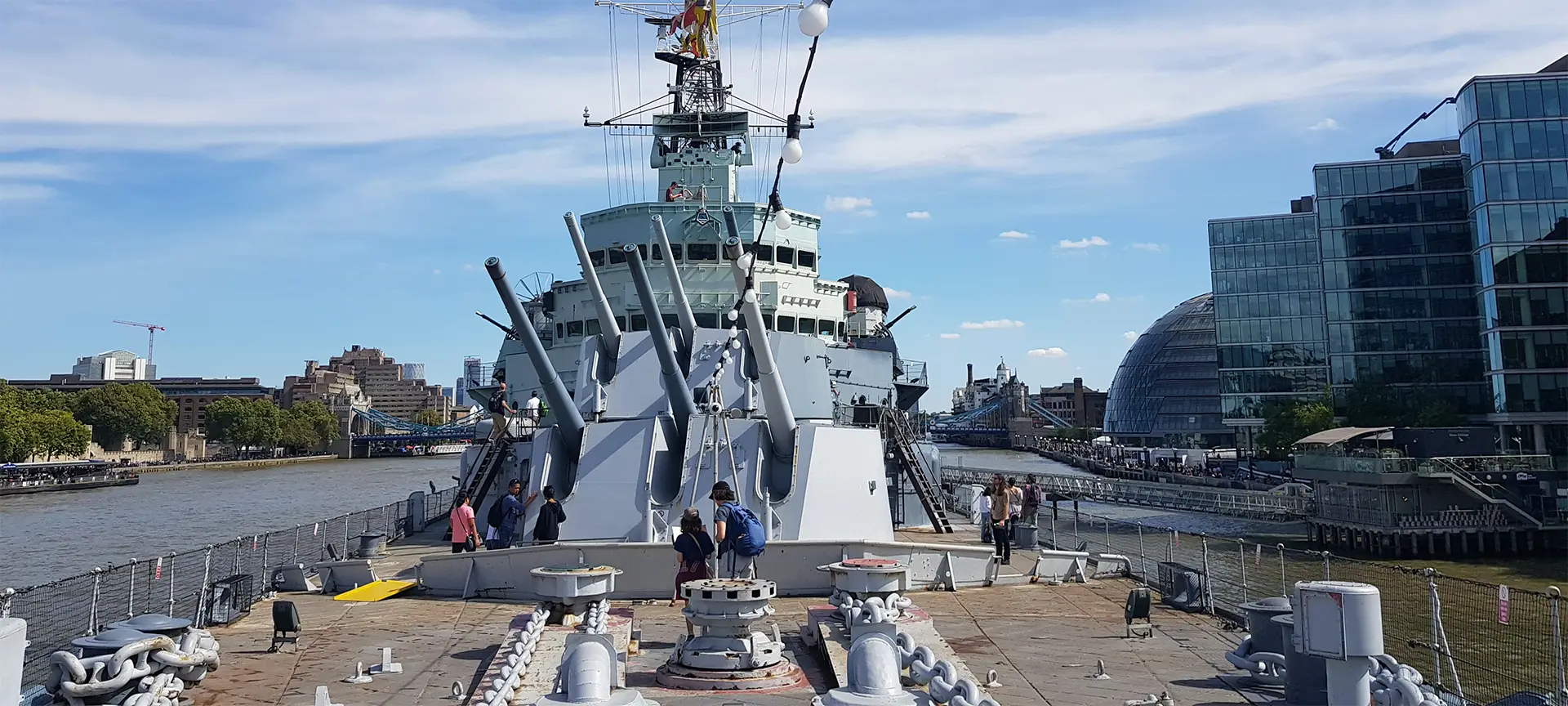
Pay tribute to those who shaped British history at Westminster Abbey
While I enjoyed visiting Westminster Abbey when I was a teenager, I knew I needed to visit again as an adult to fully appreciate it. So I returned, this time with my British husband.
The site has been a place of worship for more than 1,000 years and Westminster Abbey is a working church still today. Since 1066, every English and then British coronation has taken place here and it is the final resting place for monarchs, poets, musicians, scientists, and politicians. It has also been the venue for 16 royal weddings. The building is one of the finest examples of medieval perpendicular Gothic architecture.
We spent three hours inside the Abbey because there is so much to see. The free audio tour did a fantastic job of sharing the history and guiding us through the church.
The most moving part of the tour was visiting the Tomb of the Unknown Warrior. It is the grave of a British soldier brought back from France and buried in Westminster Abbey on Armistice Day in 1920. You can’t miss it as it is framed with poppies and it is the only grave inside the Abbey that no one ever walks on.
I also enjoyed visiting the Queen’s Diamond Jubilee Gallery which has over 300 items personally chosen by the Queen. There is an additional charge to see this part of the Abbey, but it is worth it. We saw funeral effigies of several monarchs, the coronation chair used for Mary II, Prince William & Catherine Middleton’s marriage license and more.
While there are many monarchs buried in Westminster Abbey, one of the most impressive tombs is for Mary Queen of Scots. She was originally buried at Peterborough Cathedral and then later moved here when her son James became king.
We also spent a lot of time in the Poet’s Corner, the Lady Chapel, and the Chapter House. As an American, I loved seeing that there were some Americans (Martin Luther King, Franklin D. Roosevelt, George Peabody, and Henry Wadsworth Longfellow) honored at Westminster Abbey.
With all the history, it’s easy to see why it has been named a UNESCO Heritage site and one of those places that you must visit in London!
Address: Westminster Abbey – 20 Dean’s Yard, London SW1P 3PA
Nearest Underground station: Westminster
Recommended by Anisa Alhilali from Two Traveling Texans

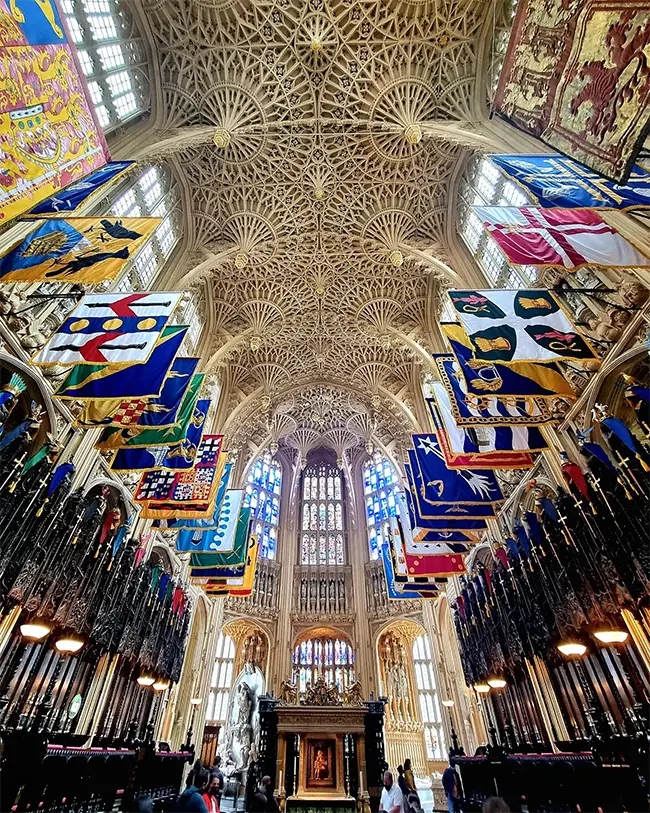

Victorian vibes at the Royal Albert Hall
The Royal Albert Hall is an incredibly special building, unlike any other in London. It has an amazingly varied program. They have hosted talks, concerts, operas, rock gigs, circuses, tennis games, dinner, debutante balls, ballets, boxing matches and even a marathon. No two years have looked the same since it first opened in 1871, upholding its original purpose as a hall for the arts and sciences.
This circular concert venue has been a cultural home to me for many years, first as I performed there with several choirs, then as an excited concertgoer and finally as a workplace for three years. The Royal Albert Hall has a special atmosphere that enthralls all who visit. As the seats wrap almost all the way around the stage, performers love the intimate feeling, despite the place holding 5,000 customers.
I love that you can still see so much of the history. Either side of the grand staircase are the portraits of Queen Victoria and Prince Albert. The staircase itself is very wide and has shallow steps, enabling two Victorian ladies with large dresses to pass without showing their ankles and exciting the gentlemen visitors. (The Victorian architects were so concerned with being “proper” that they didn’t include a female toilet)!
Along the corridors are photos and drawings of some of the most iconic moments at the Hall, including suffragettes climbing across the iconic boxes and protesting. Lastly, and my favourite things, are the distinctive “mushrooms” that hang from the roof. These were installed in the 1960s to combat the SHOCKING acoustics. The echo was so bad that you could “hear the same piece of music twice in one night”. With the addition of these UFO-like buffers and the new speaker system, perfected in 2019, the sound is now as great as the building.
The cheapest way to see the Royal Albert Hall is to join me at the Proms. This is a series of concerts that run all summer with some of the world’s best classical music performers and the concerts are just £6. It is a glorious way to spend a summer evening. Learn more about the Proms and 100 more things to do in London.
Address: Royal Albert Hall – Kensington Gore, London SW7 2AP
Nearest Underground station: South Kensington / Gloucester Road.
Recommended by Rosie Fluskey from Flying Fluskey
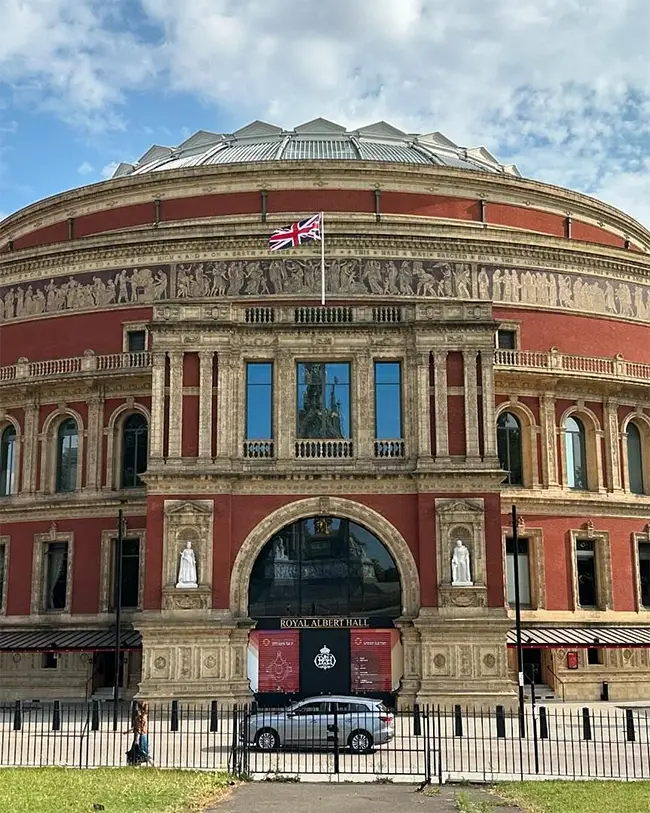

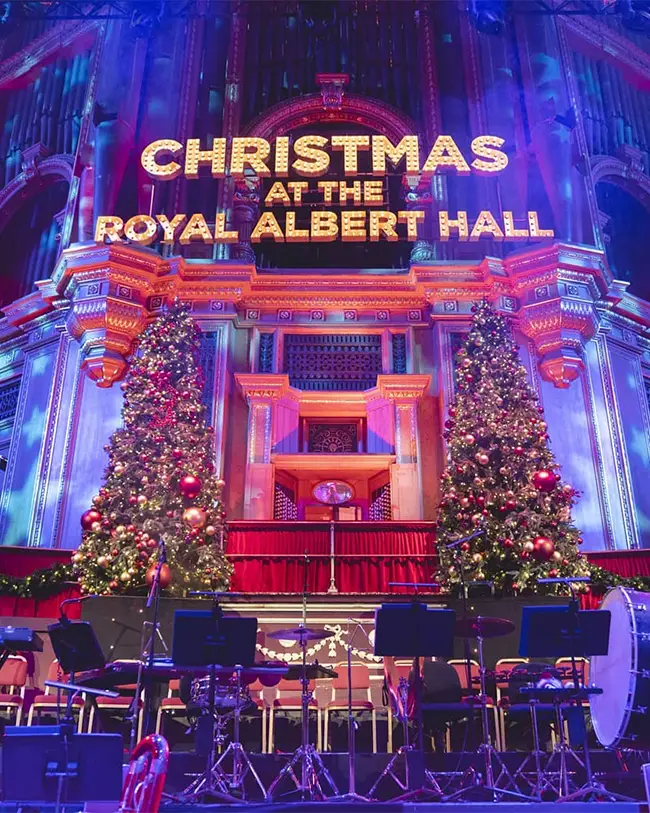
See the Crown Jewels & famous Ravens at the Tower of London
This former Royal Palace and prison has seen its fair share of history since it was built in 1070 by William the Conqueror. Much of that history is grisly and it’s told with great aplomb by the uniformed Yeoman Warders who work here as guides to London’s iconic castle.
While you can walk around the castle yourself, you’ll miss out immensely if you don’t join one of the guided tours that are included in your price of admission. Tours are informative, detailed and hilariously funny. It was the highlight of our trip and you also have as much time as you wish to explore independently, or with the help of a paid-for audio guide.
We easily spent over half a day here, exploring the White Tower, seeing the Tower’s famous guardians, the Ravens and marvelling at the Crown Jewels on display here. We visited as a couple, but this is a superb visit for all the family, and despite the somewhat gruesome nature of some of the castle’s history, the Guards do make the tour very kid friendly.
There are exhibitions throughout the grounds, including Torture at the Tower, displaying how prisoners were treated over the centuries and the Line of Kings, which displays armour used by monarchs. The Raven’s Café serves takeaway food here or the Armouries has a sit-in service for more substantial meals available, or bring your own food and drinks without restriction for a picnic to enjoy longer in the grounds.
Address: Tower of London – Tower Hill, London EC3N 4AB
Nearest Underground station: Tower Hill
Recommended by Sarah Carter from A Social Nomad
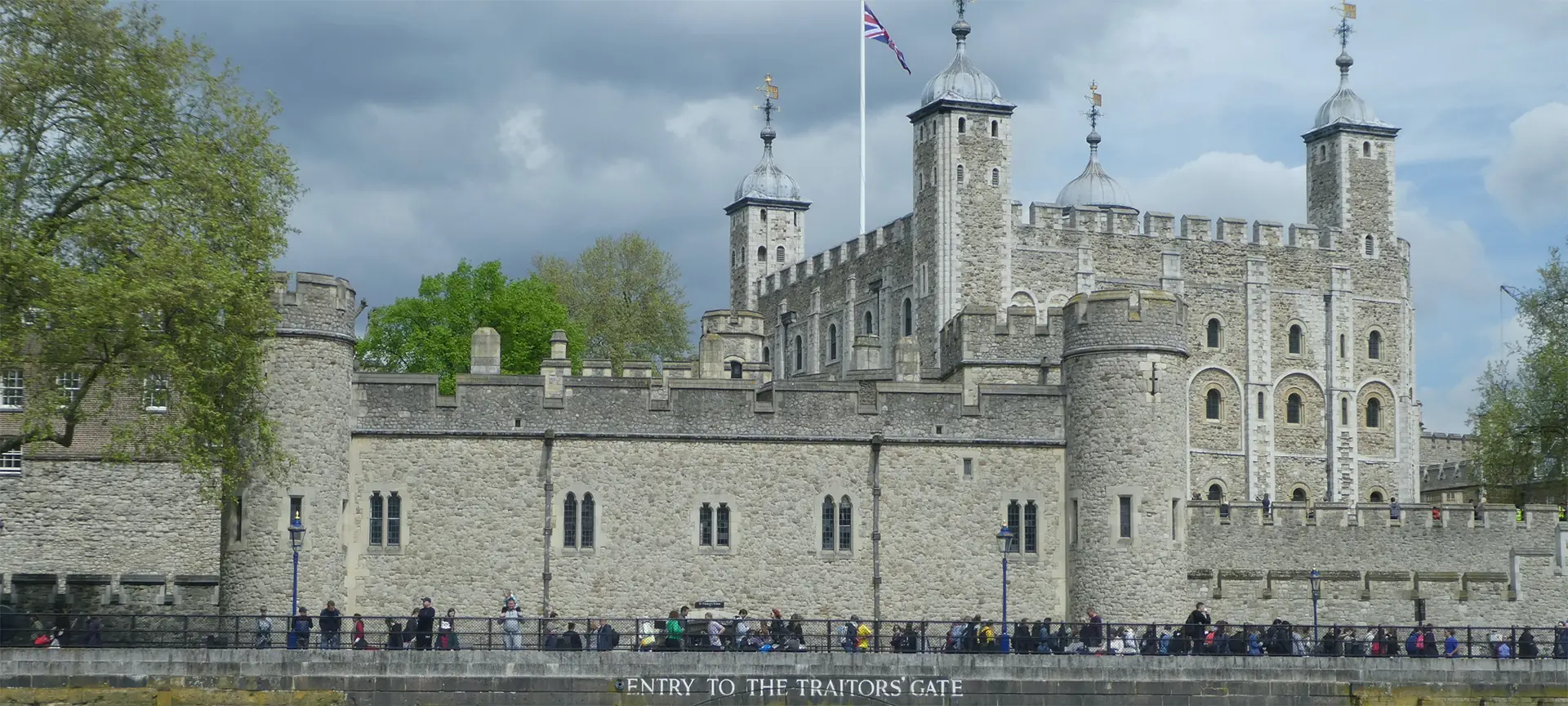
Relive the time to dare at the Churchill War Rooms
“It is the time to dare and endure.” These words, spoken in 1940 by Prime Minister Winston Churchill, to sum up the British approach to World War II. And today, you can immerse yourself in those times of courage with a visit to the Churchill War Rooms. A fascinating stop along London’s District Line, the rooms and museum are underground in the Treasury building in Westminster. This amazing historical treasure is one you won’t want to miss!
The warren of halls and rooms that served as the nerve center of British strategy during World War II appear today as they did during those dangerous times. This building, vacant when the war began, transformed into bustling offices and spartan accommodations for Churchill, his wife, and his team. It was thought to be bomb-proof. This was later shown to be a false assumption, but the bunker-like rooms survived the war without damage.
My favorite is the Map Room, where operations were planned using colored stick pins and yarn. You can also see the Cabinet War Room, which hosted more than 100 high-level meetings during the war. In all the rooms, telephones, pencils, paper, furnishings, and even ashtrays lie in place, just as they did in the 1940s.
A museum focusing on Churchill’s life opened next to the War Rooms in 2005. Allow time to visit the displays of items such as Churchill’s military uniforms and favorite cigars. Learn about the quirks and foibles of this eccentric personality. Then take another wander along the hallways of the Churchill War Rooms and imagine life as it was decades ago in the midst of uncertainty and courage.
Address: Churchill War Rooms – Clive Steps, King Charles Street, London SW1A 2AQ
Nearest Underground station: Westminster
Recommended by Sharon Odegaard from Exploring Our World


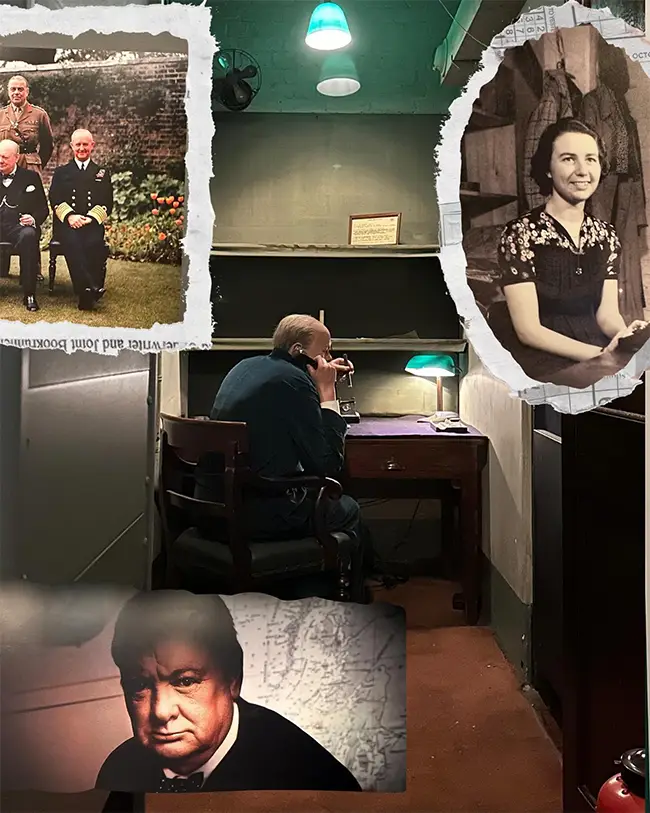
Delve deep into the past at the Natural History Museum
Located in South Kensington, the Natural History Museum is one of London’s most popular tourist attractions. First opened back in 1881, the museum was formerly known as the British Museum before its name-change in 1992. The museum is home to an astonishing 80 million items across five separate collections. Think fossils from dinosaurs and meteorites from space and you’ve got a good idea of what’s waiting to be discovered during your visit to the Natural History Museum. I’ve visited the museum numerous times, both as a child and as an adult, and it makes for a fantastic, fun-filled day out for all ages.
On my most recent visit back in 2015 I went with one of my best friends and we hugely enjoyed wandering around all five zones of the museum, taking photos and marvelling at the incredible collection of artefacts on display. There are interactive learning stations and lots of video exhibits at the museum, making it great for groups of children on school visits with educational programmes running throughout the year.
The most famous residents at the museum are Dippy, a 105ft replica of a Diplodocus dinosaur, and Hope, an 82ft long blue whale skeleton. If that’s not enough to look at, I can highly recommend checking out The Darwin Centre which is home to an interactive gallery where you can learn all about the diversity of life.
The best thing about the Natural History Museum? Entrance is totally free! Bring the kids, take your besties or enjoy a couples afternoon all without spending a penny!
Address: Natural History Museum – Cromwell Road, South Kensington, London SW7 5BD
Nearest Underground station: South Kensington (no step-free access) / Gloucester Road (step-free access)
Recommended by Jessica Buck from Journeys with Jessica

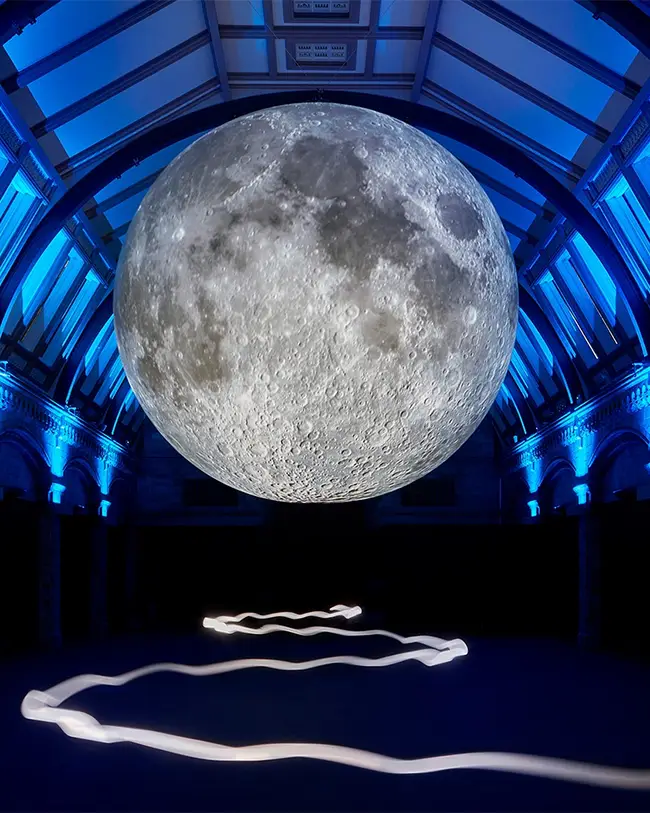

Royal Botanic Gardens at Kew, 300 acres of stunning parkland
My son Richard moved to London to become a student at St. Martin’s College of Art a few years ago. He fell in love with London life and has never returned to Bristol. So, for the last few years, we have been travelling backwards and forwards to London to meet up with him.
A local coach firm offers a trip to Kew Gardens every year in February or March and this has become a favourite excursion for my husband and me. When the weather is cold and wet, and the skies are grey what could be nicer than wandering through the Victorian palm house or seeing the temperate plants in the enormous Princess Diana Greenhouse?
Kew Gardens, which is a UNESCO world heritage site, has one of the largest plant collections in the world with over 50,000 species of native and exotic flowers. After spending days pounding the pavements looking at the sights in central London it can be very relaxing to spend a day in beautifully landscaped gardens.
Tickets can be booked online and include entrance to the art galleries, the treetop walkway and all the glasshouses and greenhouses. You can even see Kew Palace where mad King George III lived. If you don’t want to walk too far there is a hop-on hop-off land train which connects the most popular attractions. The gardens have good restaurants serving seasonal produce or you can take a picnic. We were very impressed with the vegetarian options.
The journey to Kew Gardens station from Tower Hill station takes about 40 minutes on the Richmond branch of the District Line. It’s worth noting that there is no level access westbound so disabled visitors should travel an extra stop to Richmond and return eastbound. The station is about 500 metres from Victoria Gate.
Address: Royal Botanic Gardens, Kew – Kew Road, Kew, London TW9 3AE
Nearest Underground station: Kew Gardens
Recommended by Ann Fraser from The Platinum Line
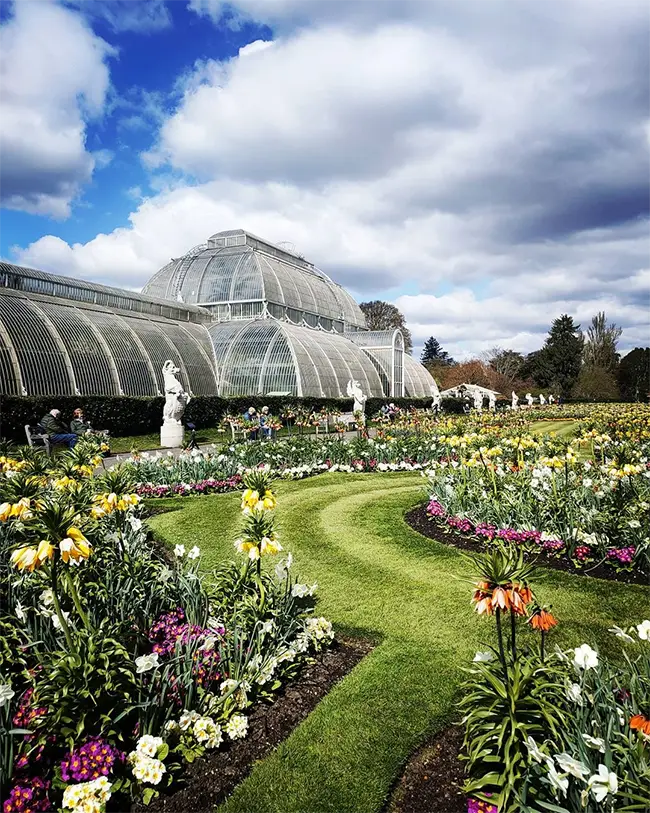


Appreciate Brick Lane’s street art & gritty history
The area was first settled by brickmakers in the 1600s. Different immigrant trades followed with weavers in the 1700s, the tailoring and rag trade in the 1800s and Bangladeshi restaurateurs in the 1900s. This history has given the neighborhood a hard-working, gritty edge.
Street art tends to flourish in neighborhoods with economic adversity or an immigrant culture and Shoreditch is no exception. A creative class has emerged in the neighborhood and it has become a fertile ground for graffiti and street art with Brick Lane is its epicenter.
Brick Lane’s street art is provocative and messy. The artists tend to layer over one another by modifying or covering up the works of others. Sometimes this is done in the spirit of post-facto collaboration but sometimes it is done as a statement of disapproval of the previous artist’s work. Even some of the larger, commissioned pieces may only last a year or two before being reworked.
So the area is always worth a visit, even if you’ve been before.
While there is some graffiti on Brick Lane proper, you’ll want to wander off onto the side streets and parking lots to see the best bits. Be sure to check out Hanbury, Princelet, Heneage, Fashion and Chicksand streets. And go into what’s known as the Seven Stars car park (which is between Fornier and Fashion. It used to be the parking lot of a historic pub and it’s constantly being worked over by world class street artists.
Address: Brick Lane street art – Brick Lane, London E1
Nearest Underground station: Aldgate East
Recommended by Carol Guttery from California Crossings


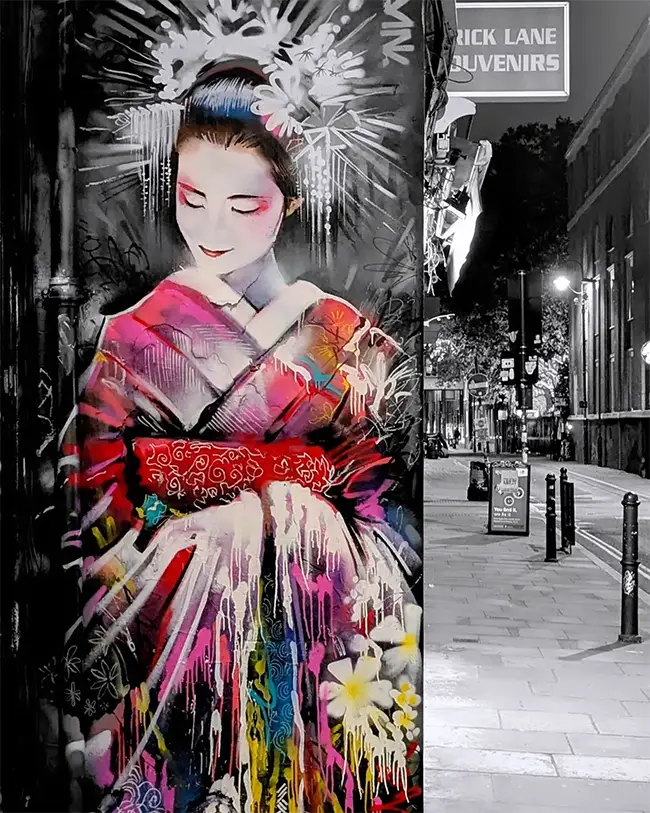
London, now see it for yourself
Now you’ve read about all the sights, what are you waiting for? Head to the big smoke to start exploring! All you need is a tube map, a camera, and fantastic accommodation close to any of the District Line’s 60 stations. Then you can be visiting these attractions in no time!
See you in London!
I moved to London in 1991 ‘for a couple of years’ in search of a new career. More thirty years later I continue to enjoy being in the city, sometimes seeing it through the eyes of a local and sometimes with eyes of a tour guide as I share places I love with family & friends. From bar food in Borough to Michelin-starred meals in Mayfair and from market stalls in Soho to the shameless extravagance of Selfridges, I love the rich variety London has to offer and sharing that with others.
